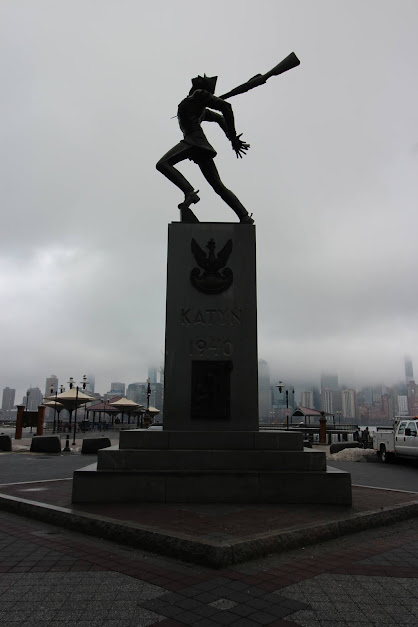The Katyn Memorial is a bronze statue of a Polish soldier dedicated to the victims of the Katyn massacre in 1940. The Katyn Massacre was a series of mass execution of nearly 20,000 Polish military officers carried out by Joseph Stalin after Soviet Union troops had invaded Eastern Poland. The statue is of a solider, gagged and bound, impaled in the back by a bayoneted rifle, standing on top of a granite base containing Katyn soil. It's located in Jersey City.
February 2021, I started a photography project with the goal of photographing some historically significant, weird, or scenic places in New Jersey broken down by county. This blog is my collection of places, all taken on my Canon T5i Rebel with detailed descriptions.
Saturday, October 23, 2021
The Deserted Village, Berkeley Heights (Union County)
The Deserted Village of Feltville is located in the Watchung Reservation in Berkeley Heights. It was a mill town, a farming community, and a summer resort. David Felt was a Boston business man and decided to move to New York City, but the production of his mill couldn't grow fast enough to meet the demands of the merchants he supplied to so he bought land in New Jersey. He named the new town "Feltville" and by 1850 the town had about 175 people. After 15 years Felt sold the property and after several successor businesses failed, the place became known as "the deserted village"
Thomas Edison Center at Menlo Park, Edison (Middlesex County)
The Thomas Edison Center at Menlo Park is a memorial to Thomas Edison. The tower was dedicated on February 11, 1938 on what would have been the inventor's 91st birthday. The tower marks the location of Edison's Menlo Park laboratory, the world's first organized research and development site. Menlo Park is known as the Birthplace of Recorded Sound (November 1877) and the site of the world's first practical incandescent lamp light bulb (October 1879). Edison and his staff would create 400 of his most important inventions here. He would later relocate to West Orange in 1884.
Thomas Edison National Historical Park, West Orange (Essex County)
Thomas Edison National Historical Park preserves Thomas Edison's lab and residence, Glenmont, in West Orange. These were designed in 1887. The Edison lab operated for more than 40 years, and out of the West Orange lab came the motion picture camera, improved phonographs, sound recordings, silent and sound movies and the nickel-iron alkaline electric storage battery.
"War Of The Worlds" by Orson Welles Monument, West Windsor Township (Mercer County)
On October 30, 1938, actor and filmmaker Orson Welles presented a drama adaptation of H.G. Wells class "The War of the Worlds." In an era before news and information could be quickly and easily verified, and in a country tense during the buildup to World War II, some listeners believed the fictional broadcast was of a real event. The novel was adapted for radio by Howard Koch, who changed the primary setting from 19-th century England; the landing point of the first Martian spacecraft was changed to rural Grover's Mill, and unincorporated village of West Windsor Township.
Subscribe to:
Comments (Atom)




